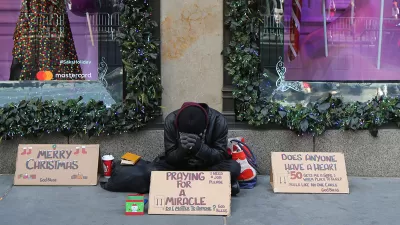Upzoning without addressing speculation and finance could exacerbate the housing crisis for the nation’s most vulnerable communities, a professor of urban planning warns.

Whether or not blanket upzoning policies, like California’s recently quashed SB 50, would address the state's housing affordability crisis is a question that's hotly contested and a debate that goes beyond the standard YIMBY vs. NIMBY narrative, according to Dr. Ananya Roy, professor of urban planning and founding director of the Institute on Inequality and Democracy at UCLA.
Dr. Roy studies how market forces and public policy combine to drive displacement and housing inequality in cities around the world. In an exclusive interview with The Planning Report, Roy discusses how failing to address the structural causes of housing precarity, including speculation by major financial actors, could exacerbate the housing crisis for the communities who are already most vulnerable to its impacts.
Lost between the YIMBY supply-side rhetoric and the NIMBY "neighborhood character" mantra is a critical look at how predatory financial practices lead to housing insecurity and homelessness in the first place, Roy says:
"At the risk of oversimplification, the story goes a bit like this: What we saw with the foreclosure crisis and the Great Recession was, of course, predatory lending by large banks. That predatory, deregulated lending led to a massive loss of wealth and homeownership for racial and ethnic minorities. There were whole cities and communities devastated by the vast reach of that crisis.
Those neighborhoods, as well as the neighborhoods we traditionally think of as the “inner city,” are now the sites of new forms of predatory financialization. Private equity firms such as Blackstone are buying up quite large amounts of property, including foreclosed single-family homes, and converting them into rental housing—and then, as research by scholars such as Desiree Fields shows, securitizing that housing and turning it into a speculative asset."
Without intentional efforts to curb these practices by regulating massive corporate landlords and enhancing tenant protections, Roy says, supply-side housing solutions like upzoning might ease the housing burden for the upper-middle class while making it far worse for low-income communities of color threatened by houselessness, eviction, and structural racism.
FULL STORY: UCLA's Ananya Roy on Housing Inequality & Market-Driven Displacement

Alabama: Trump Terminates Settlements for Black Communities Harmed By Raw Sewage
Trump deemed the landmark civil rights agreement “illegal DEI and environmental justice policy.”

Planetizen Federal Action Tracker
A weekly monitor of how Trump’s orders and actions are impacting planners and planning in America.

The 120 Year Old Tiny Home Villages That Sheltered San Francisco’s Earthquake Refugees
More than a century ago, San Francisco mobilized to house thousands of residents displaced by the 1906 earthquake. Could their strategy offer a model for the present?

San Francisco Opens Park on Former Great Highway
The Sunset Dunes park’s grand opening attracted both fans and detractors.

Oregon Legislature to Consider Transit Funding Laws
One proposal would increase the state’s payroll tax by .08% to fund transit agencies and expand service.

Housing Vouchers as a Key Piece of Houston’s Housing Strategy
The Houston Housing Authority supports 19,000 households through the housing voucher program.
Urban Design for Planners 1: Software Tools
This six-course series explores essential urban design concepts using open source software and equips planners with the tools they need to participate fully in the urban design process.
Planning for Universal Design
Learn the tools for implementing Universal Design in planning regulations.
Clanton & Associates, Inc.
Jessamine County Fiscal Court
Institute for Housing and Urban Development Studies (IHS)
City of Grandview
Harvard GSD Executive Education
Toledo-Lucas County Plan Commissions
Salt Lake City
NYU Wagner Graduate School of Public Service





























